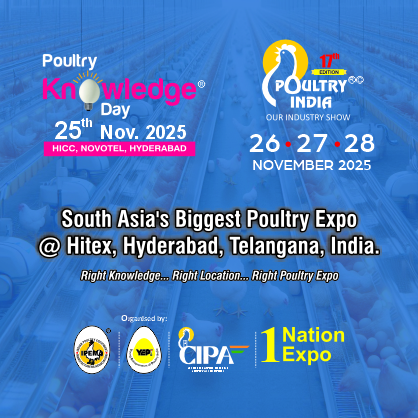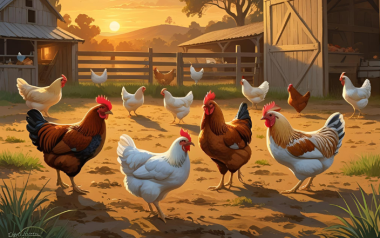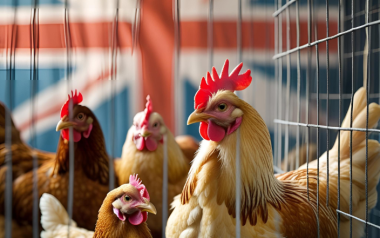14 Nov 2019
Selection Objectives and their impact on hen management
El año pasado la población mundial sobrepasó la marca de los 7 mil millones de personas y continúa en aumento a una tasa de 80 millones al año aproximadamente. Paralelamente, la demanda de huevos aumenta al menos al mismo ritmo.
Available in other languages:
Content available at:
Español (Spanish)
World egg production, which was estimated at 65 million tons in 2005, is expected to reach 75 million tons in 2015, that is, a 1 million ton per year growth rate during the last decade.
In order to meet such increasing demand, at least 50 million hens must be added every year, under the assumption that handling conditions are appropriate and support a genetic potential of 20 kg egg mass per hen up to the age of 72 weeks.
Habits and preferences of the consumer regarding specific features of the egg, such as shell color and size of the egg differ among countries and even among consumers within one single country.
In the near future, changes in consumption habits of an urban population having the required spending power, will bring about an increase of egg demand from China, India, Latin Anerica, and certain African countries. On the contrary, in Europe and North America the potential for growth is quite low.
For instance, white eggs are preferred in North and Central America, the Middle East, India, Taiwan, and Philippines, whereas brown eggs are preferred in most of Latin America, Europe, Africa, and China. Finally, cream-colored eggs, produced by poultry derived from a cross between lines of White Leghorn and lines of brown eggs, are highly popular in Japan and China, though they are rarely seen in Europe.
The laying hen industry has undergone major changes in the recent decades and had to face great challenges.

While the focus must be kept on maximizing the genetic potential of poultry to produce high quality protein at a competitive price, additional requirements, changing consumption habits, and the public opinion regarding animal welfare issues must be seriously taken into consideration in the egg industry.
Genetics companies need to look beyond current requirements and anticipate the changing needs and opportunities that may crop up in the market at least five years in advance.
It is essential that there is a close communication between geneticists and distributors in order to introduce new variants in a timely manner, thus achieving a benefit from emerging market niches.
While the focus must be kept on maximizing the genetic potential of poultry to produce high quality protein at a competitive price, additional requirements, changing consumption habits, and the public opinion regarding animal welfare issues must be seriously taken into consideration in the egg industry.
Genetics companies need to look beyond the current requirements and anticipate the changing needs and opportunities that may crop up in the market at least five years in advance.
It is essential that there is a close communication between geneticists and distributors in order to introduce new variants in a timely manner, thus achieving a benefit from emerging market niches.
In the worldwide laying hen business, the right poultry must be provided to various markets, since each one of these markets has particular requirements regarding the productive profile of commercial laying hens.
Housing systems vary among continents. In Europe, enriched cages, which are deemed as an acceptable compromise between animal welfare requirements and the needs of laying hens, have replaced conventional battery cages.
In order to achieve a genetic improvement in hens, performance tests are carried out both in pure lineage fowls housed under optimal conditions within pure lineage centers, and in fowls resulting from respective crosses housed in commercial farms distributed throughout various countries around the world.
With pure lineages, information is obtained on various housing systems in individual cages and grouped family cages, as well as under floor conditions using a new “trap nest” system.
“In the global laying hen business each market has particular requirements for the production profile of commercial layers”
Egg production is recorded every day with the help of bar code readers. In addition, information is collected on various features of the egg, mainly egg weight, stability and shell color, as well as the inner quality of the egg.
Individual food intake, as well as the daily egg mass produced, are determined during peak production, i.e., the period of maximum yield, such that selection to improve the performance of the fowl is also reflected in the ability to eat a suitable amount of food at the time of the greatest nutrient demand.
The feathering condition is an information collected during various phases of the productive cycle in family coops, both in centers with pure lineages and in field tests. In this manner, it is possible to detect families with a greater tendency to pecking each other, and based on this information, it is also possible to select the fowls with the least inclination to this kind of behavior.
PERFORMANCE TEST
The automatic egg-collection system for floor performance was developed almost ten years ago. This system is based on the use of transponders along with a nest that has been specially designed to single out and record information on each fowl´s entry into the nest.
It also allows to collect individualized data on each fowl, not only on its egg-laying performance, but on its acceptance of the nest and its egg-laying behavior, the time interval between ovipositions, the time it stays in the nest. Moreover, this system provides individualized information on the use of the outdoor area -conservatory or veranda- by each fowl.
Such data is used to select families based on “number of sellable eggs laid in the nest”, which penalizes those families with a low acceptance of the nest, which tend to lay their eggs on the floor.
The moderate inheritability of the feature “eggs laid in the nest” recorded in these floor systems indicate that the use of nesting boxes by the hens can be improved on, thus reducing the number of eggs laid on the floor. However, no miracles should be expected from gene screening; therefore, it is essential to implement a good management to lower the number of eggs laid on the floor to a minimum.
Particular attention should be paid to the following conditions: assuring suitable conditions during collection and making the transfer at the right time; having a suitable nesting capacity, maintaining an appropriate lighting schedule and adjusting both the feed formulation and the distribution thereof along the day.
In the short- and medium term, we can affirm with absolute certainty that the number of eggs, as well as the feeding performance and the quality attributes of the egg will continue to be the cornerstone for genetic screening of egg-laying hens.
Not only will those traits related to poultry behavior, especially those of abnormal behavior, probably be a prominent matter in Europe, but also those of adaptability of hens to floor housing systems and free-range systems will also capture the attention of the rest of the world. The adaptability of hens to floor housing systems and range systems has become more relevant.
At present, the important features are as follows:
- Acceptance of nests and outdoor areas
- Good feathering up to the end of the laying cycle
- Resistance to common diseases. Minimum incidence of pecking and cannibalism.
GENETIC MARKERS
Advances in molecular biology have provided new techniques and more powerful screening tools. By using informative genetic markers, geneticists can identify those individuals with certain particular traits at an early age, and thus speed up improvements in egg quality, behavior, and viability.
These innovations supplement traditional performance and assessment test methods based on fenotypic selection rates of production, efficacy, and quality parameters.
The combination of fenotypic information on relatives along several generations, locations, and housing systems requires powerful computer programs, though it assures the selection of the best males and females to mate in order to provide the following generation.
Genotypic data, obtained from DNA tests, is combined with traditional selection methods. At present, due to the cost of genotyping (DNA testing), this is done mainly on males, whose genetic value can be more accurately assessed tan on females.
This is because males are not themselves producers, since they do not lay eggs, and testing the progeny would be extremely expensive and time consuming, that being the reason why they receive the information via their mothers and sisters. In other words, with traditional methods it is not possible to differentiate or select within a group of siblings. However, with genotypic information, not only is it possible to select males at an earlier age, but it also allows for differentiation and selection within groups of siblings.
The combination of genotypic data with traditional fenotypic information is a highly promising tool to create poultry having a producing profile that meets specific requirements.
The pillars of genetic improvement of the future laying hens can be summarized in the following objectives and biological parameters
CHARACTERISTICS
For non-caged housing systems, vital laying hens, with good permanent feathering, strong bones, and a food intake that is suitable for their performance, are required.
LAY
Nowadays a hen lays one strong-shelled egg per day. The laying sequence is rarely disrupted. In most cases, duration of pauses is as short as one day. Laying sequences of 80 to 100 days in a row laying one egg per day is the standard in more than 50% of the hens in one flock.
BEHAVIOR
A sedate behavior, along with a great ability to adapt to environmental challenges, sure to guarantee financial success. With the hoped-for prohibition of beak treatment in Europe, tame behavior, and low pecking incidence will become a key factor.
PRODUCTION CYCLE (SERVICE LIFE)
The cost of production per egg can be decreased via a longer production cycle. A consistent laying rate and shell quality will lead the way to increasing the duration of the production cycle year after year and generation after generation.
INUTRITIONAL IMPLICATIONS
Nutrient levels and calcium structure must be adapted to the growing requirements, according to the age of the hens. Should that not be taken into account, the bone and egg-shell stability will be affected; at a production level of one egg per day, a balanced feed should be assured every day, especially in the afternoon.
GENETIC SCREENING
The lay and shell consistency will continue to be enhanced through gene improvement. By genomic screening, accuracy in the selection of males will be increased. This entails a greater advancement in the improvement of all economically relevant traits, and therefore, a sustainable improvement and a greater fowl welfare.





































